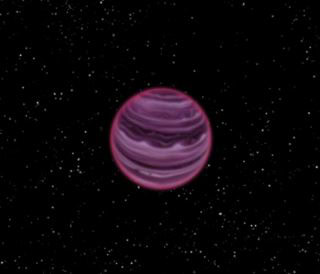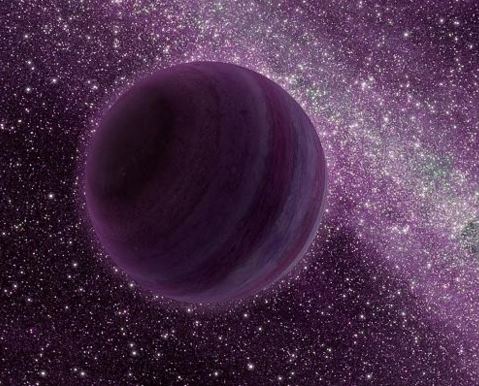A planet-like object 75-light years away has weird weather – there are layers of hot dust cloud and molten iron rain – says a team led by the University of Edinburgh. The 20-million-year-old planet does not orbit a star (sun).
Study leader, Dr. Beth Biller, of the University of Edinburgh’s School of Physics and Astronomy, and colleagues believe their findings may improve scientists’ ability to determine whether conditions in distant worlds’ are capable of sustaining life as we know it.
The astronomers, who published their findings in The Astrophysical Journal Letters, used a telescope in Chile to examine the weather systems in the distant planet – called PSO J318.5-22 – which is a juvenile in comparison to Earth. Dinosaurs roamed our planet before the object existed.
 An artist’s impression of the solitary planet-like object PSO J318.5-22. (Image: University of Edinburgh)
An artist’s impression of the solitary planet-like object PSO J318.5-22. (Image: University of Edinburgh)
They captured hundreds of infra-red images of the distant object as it rotated over a period of five hours.
Covered by super-hot clouds
By comparing its brightness with other bodies nearby, the scientists discovered that it is covered by several layers of thick and thin cloud. These cause the brightness in the planet-like object to change as it rotates, they say.
PSO J318.5-22 is about the same size as out solar system’s largest planet – Jupiter – but is approximately eight times more massive. The clouds are super hot, with temperatures inside them exceeding 800°C.
As it does not orbit a star – has no sun – Dr. Biller and team were able to accurately measure the changes in brightness on PSO J318.5-22. Stars emit massive amounts of light, making it extremely difficult to accurately measure the brightness of objects orbiting them.
Studying planets that orbit stars
The researchers believe they will be able to adapt their technique to study planets that do orbit stars. Such techniques could be used to examine cooler, lower-mass planets, where life (as we know it) is more likely to exist.
 PSO J318.5-22 is one of the lowest-mass free-floating objects ever discovered. (Image: www.slate.com video)
PSO J318.5-22 is one of the lowest-mass free-floating objects ever discovered. (Image: www.slate.com video)
Dr. Biller said:
“This discovery shows just how ubiquitous clouds are in planets and planet-like objects. We’re working on extending this technique to giant planets around young stars, and eventually we hope to detect weather in Earth-like exoplanets that may harbour life.”
The study, which was carried out by researchers in Scotland, Germany, France, Spain and the US, was funded by the Science and Technology Facilities Council, a UK government body.
Citation: “VARIABILITY IN A YOUNG, L/T TRANSITION PLANETARY-MASS OBJECT,” Beth A. Biller, Johanna Vos, Mariangela Bonavita, Esther Buenzli, Claire Baxter, Ian J. M. Crossfield, Katelyn Allers, Michael C. Liu, Mickaël Bonnefoy and Niall Deacon. The Astrophysical Journal Letters, Volume 813, Number 2. Published 2015 October 30. DOI: http://dx.doi.org/10.1088/2041-8205/813/2/L23.
